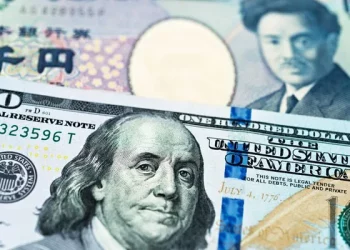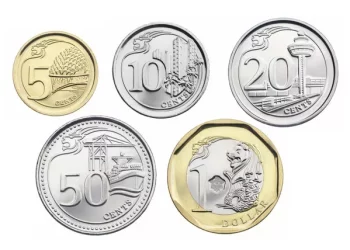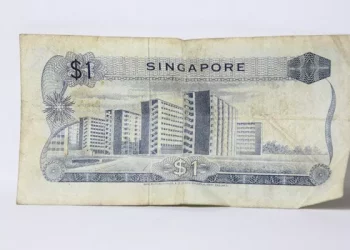In the world of foreign exchange (Forex) trading, currency conversion is an essential aspect for traders, businesses, and individuals who deal with different currencies. One of the most common conversions that traders deal with is between the US Dollar (USD) and the Indian Rupee (INR). In this article, we will explore the conversion of 4000 US dollars into Indian rupees, the factors influencing exchange rates, and how Forex traders can make use of such conversions to their advantage in the trading markets.
Understanding Currency Exchange Rates
Currency exchange rates play a crucial role in determining the value of one currency in relation to another. The exchange rate tells us how much of one currency is needed to buy a unit of another currency. In this case, we are concerned with how many Indian Rupees (INR) are equivalent to 4000 US Dollars (USD).
For instance, if the exchange rate between the US Dollar and the Indian Rupee is 1 USD = 82 INR, then converting 4000 USD would result in:
4000 USD×82 INR=328,000 INR
Thus, 4000 US dollars would convert into 328,000 Indian rupees based on this exchange rate.
How Exchange Rates Are Determined
The exchange rate between two currencies is influenced by various factors that can fluctuate frequently. Below are some of the primary factors that determine the exchange rates of the US Dollar (USD) and Indian Rupee (INR):
- Interest Rates: Central banks control interest rates within their respective countries. When the US Federal Reserve or the Reserve Bank of India changes interest rates, it can directly affect the exchange rates. Higher interest rates attract foreign capital, which increases the demand for a country’s currency.
- Inflation: The rate of inflation in a country also plays a significant role in determining its currency’s value. Lower inflation typically leads to higher currency value because it increases purchasing power. Conversely, higher inflation may reduce a currency’s value.
- Economic Performance: A country’s economic health, including GDP growth, employment levels, and industrial production, influences the strength of its currency. A strong economy often leads to a stronger currency because foreign investors are more likely to invest in that country.
- Political Stability: A country’s political climate can greatly affect the value of its currency. Political instability or uncertainty may lead to a depreciation of a currency, as investors look for safer investments in more stable countries.
- Market Sentiment: The global perception of a country’s financial outlook also affects its currency. For example, if global investors have confidence in the US economy, they may demand more US dollars, driving up its value against other currencies like the Indian Rupee.
Recent Trends in the USD/INR Exchange Rate
As of the writing of this article, the USD/INR exchange rate fluctuates around 82-85 INR for 1 USD. However, exchange rates are constantly changing due to the factors mentioned earlier, such as economic data releases, geopolitical events, and central bank policies. As a result, a trader who is looking to convert 4000 USD to INR might experience slight variations in the amount of rupees they receive depending on when the conversion takes place.
Historically, the Indian Rupee has been prone to depreciation against the US Dollar due to various factors like trade deficits, inflation, and domestic economic conditions. The government of India and the Reserve Bank of India (RBI) monitor the exchange rate closely and take steps to stabilize the currency when necessary.
The Role of Foreign Exchange (Forex) Traders
Forex traders often engage in currency trading by buying and selling currency pairs like USD/INR to profit from changes in exchange rates. Forex trading is a global marketplace that allows traders to trade currency pairs 24 hours a day, five days a week. In the case of 4000 USD in INR, a Forex trader might decide to buy or sell USD/INR to take advantage of the fluctuations in the exchange rate.
Here’s how a Forex trader might utilize this conversion:
- Hedging: Some traders or businesses may want to hedge their currency risk. For example, if a business in India expects to receive payments in US dollars, they might convert the dollars into rupees in advance to lock in a favorable exchange rate.
- Speculation: Other traders may seek to speculate on the movement of exchange rates. They would buy USD when they believe the currency will strengthen and sell it when they expect it to weaken. If a trader predicts that the Indian Rupee will weaken, they may decide to hold onto USD until they can convert it back into rupees at a more favorable rate.
- Carry Trading: Carry trading is a strategy where traders borrow funds in a low-interest-rate currency and invest them in a higher-interest-rate currency. For example, a trader might borrow in Indian Rupees (since India’s interest rates tend to be higher) and buy US Dollars to earn a profit from the difference in interest rates.
- Arbitrage: Traders also use arbitrage to take advantage of small price differences between different Forex markets. For example, if the USD/INR exchange rate is different in two separate markets, a trader might buy the USD at the lower price and sell it at the higher price, pocketing the difference.
Converting 4000 USD to INR in Practice
Let’s examine the conversion of 4000 US dollars into Indian rupees in practice. As mentioned earlier, the exchange rate for USD/INR can fluctuate. As of now, the approximate rate is 1 USD = 82 INR. However, this exchange rate is constantly subject to change due to the factors mentioned above.
Scenario 1: Favorable Exchange Rate
If a Forex trader is looking to convert 4000 USD at an exchange rate of 1 USD = 82 INR, they would receive 328,000 INR. This is a relatively favorable exchange rate for the trader, as they are receiving a higher number of rupees per dollar.
Scenario 2: Unfavorable Exchange Rate
On the other hand, if the exchange rate drops to 1 USD = 80 INR, the trader would receive only 320,000 INR for their 4000 USD. In this scenario, the trader receives fewer rupees due to the weaker exchange rate, making it a less favorable conversion.
Scenario 3: Fluctuating Market Conditions
In real-life scenarios, Forex markets are often volatile. Traders must constantly monitor the currency pairs and be ready to act quickly when market conditions change. For instance, if there is news about the US Federal Reserve raising interest rates, the USD might strengthen, leading to a more favorable conversion rate for traders holding dollars.
The Impact of Exchange Rate Fluctuations on International Business
For businesses involved in cross-border trade, exchange rate fluctuations can have a significant impact on their bottom line. Companies importing or exporting goods to and from India need to be aware of the exchange rate between USD and INR to make informed financial decisions.
For instance, an American company importing goods from India may find that when the Indian Rupee weakens against the US Dollar, their cost of importing becomes more expensive. Conversely, when the Rupee strengthens, their import costs decrease.
Similarly, Indian businesses exporting products to the United States may benefit when the Indian Rupee weakens, as it makes their products more affordable for American consumers. This can lead to increased demand for Indian products.
Conclusion
In conclusion, the conversion of 4000 US dollars into Indian rupees is an example of how currency exchange rates work and how they can impact both traders and businesses. The value of the Indian Rupee against the US Dollar fluctuates due to various economic and political factors, and understanding these factors can help traders and businesses make better financial decisions.
For Forex traders, the conversion of 4000 USD to INR is just one example of how they can use currency fluctuations to their advantage. Whether they are hedging, speculating, or engaging in carry trading, currency conversions are an essential part of the trading strategy.
As the global economy continues to evolve and new developments arise, exchange rates will continue to fluctuate. Therefore, it is crucial for those involved in Forex trading or international business to stay informed about market conditions and make decisions based on current and projected trends. Understanding how to convert dollars into rupees and how to manage the risks involved with exchange rate fluctuations is a fundamental skill for anyone looking to navigate the world of foreign exchange.
By keeping an eye on the market, understanding key factors that influence currency values, and developing a solid trading strategy, Forex traders can make informed decisions and potentially capitalize on opportunities that arise from the constant ebb and flow of the currency markets.
Related Topics:




























